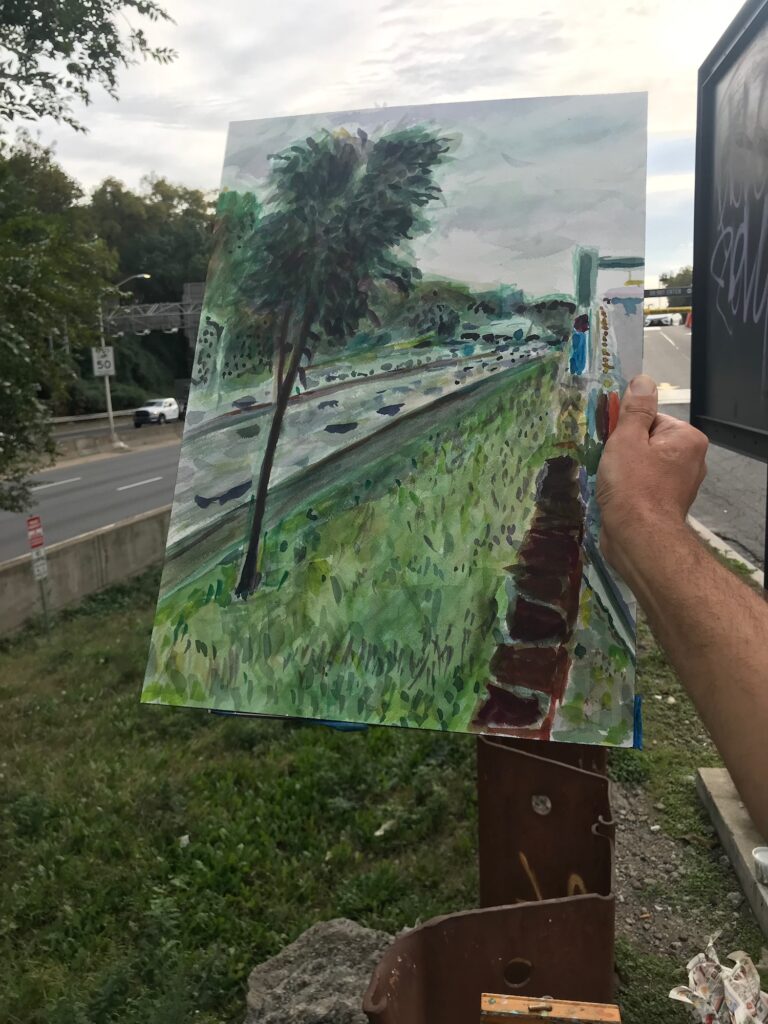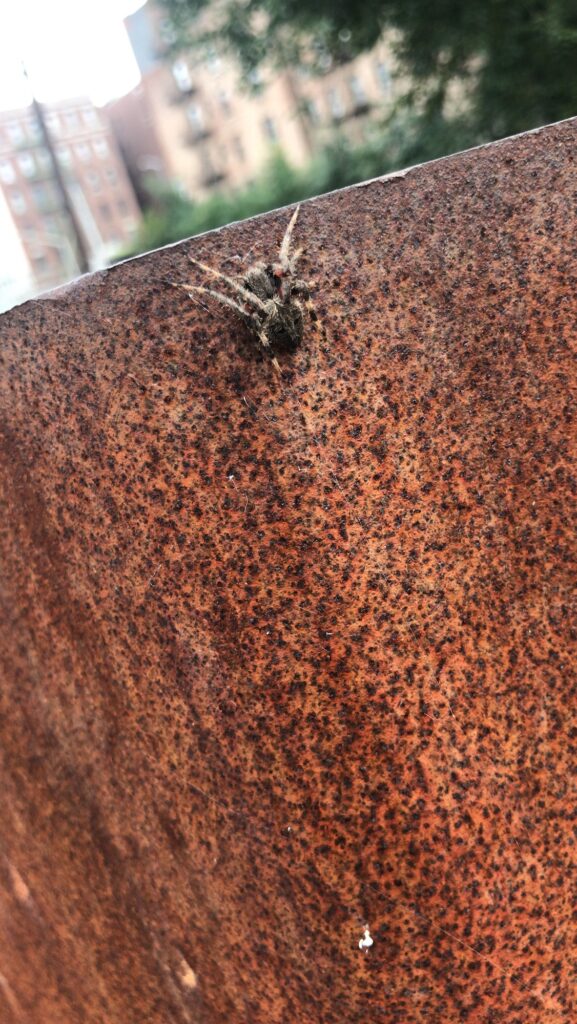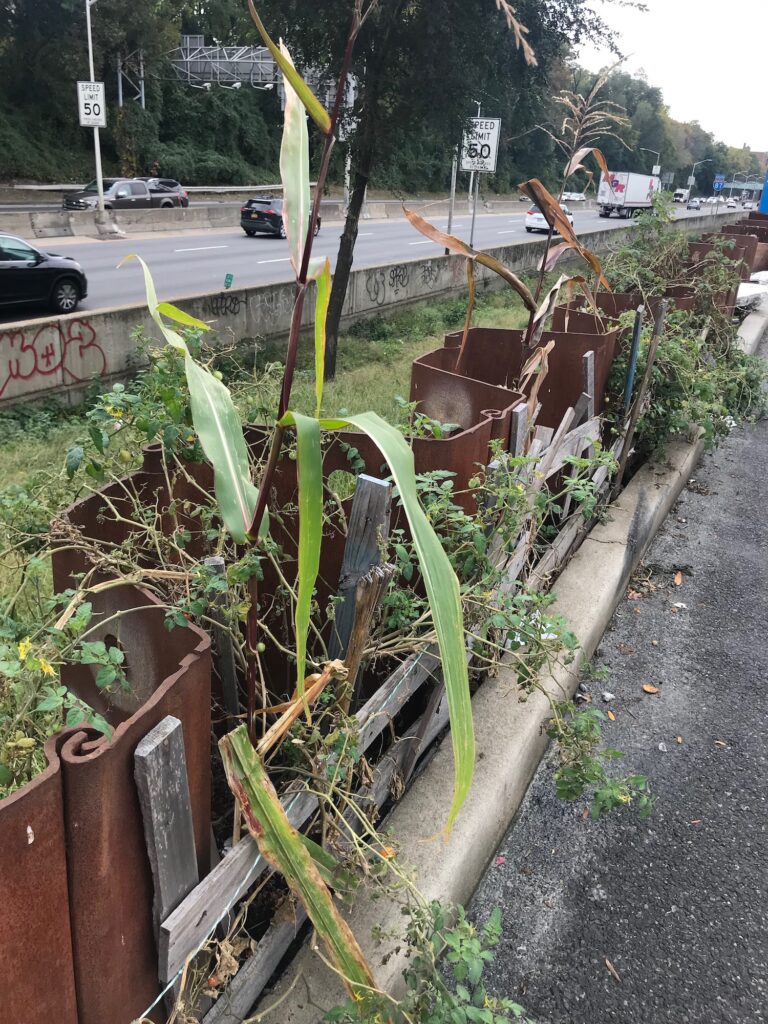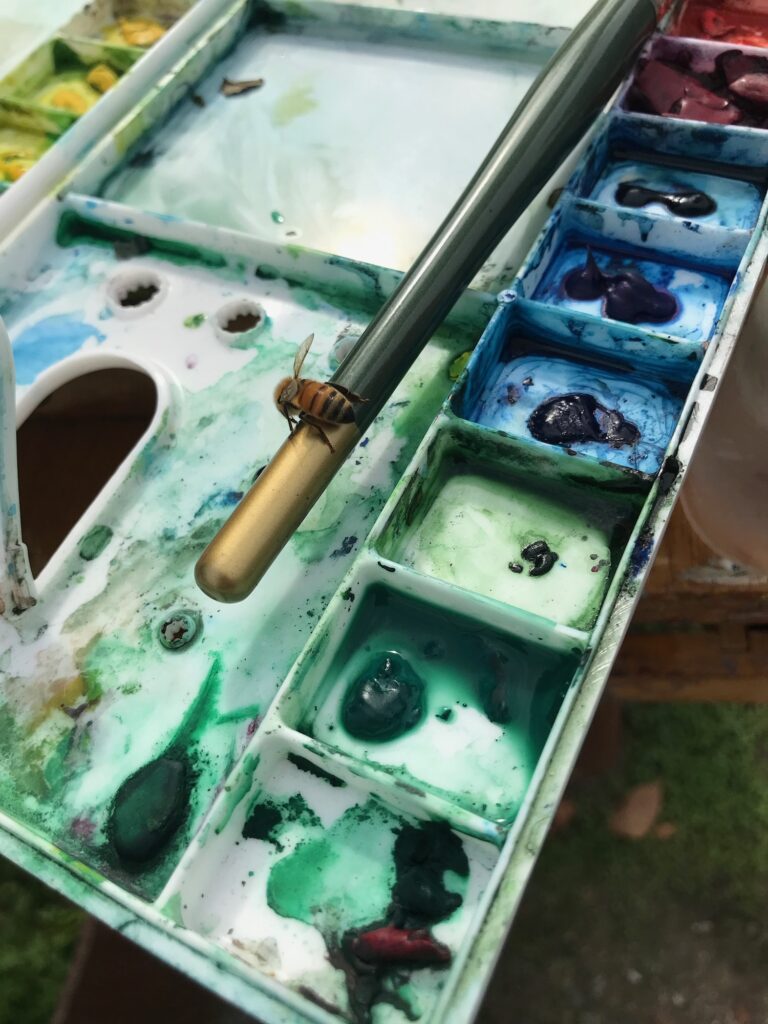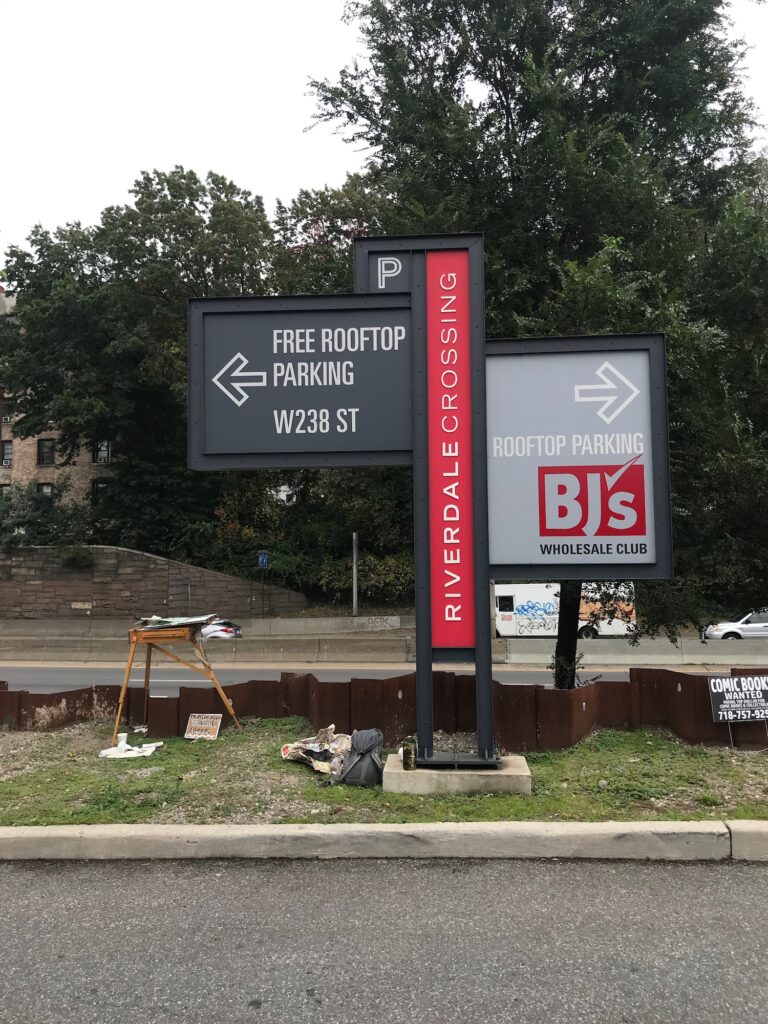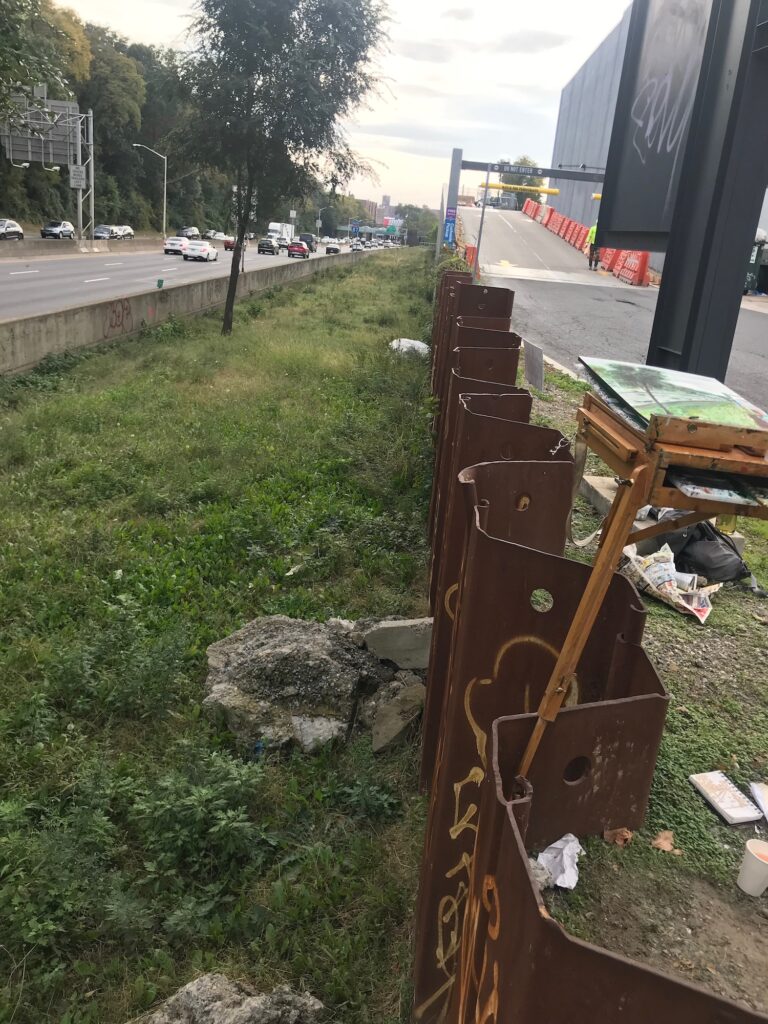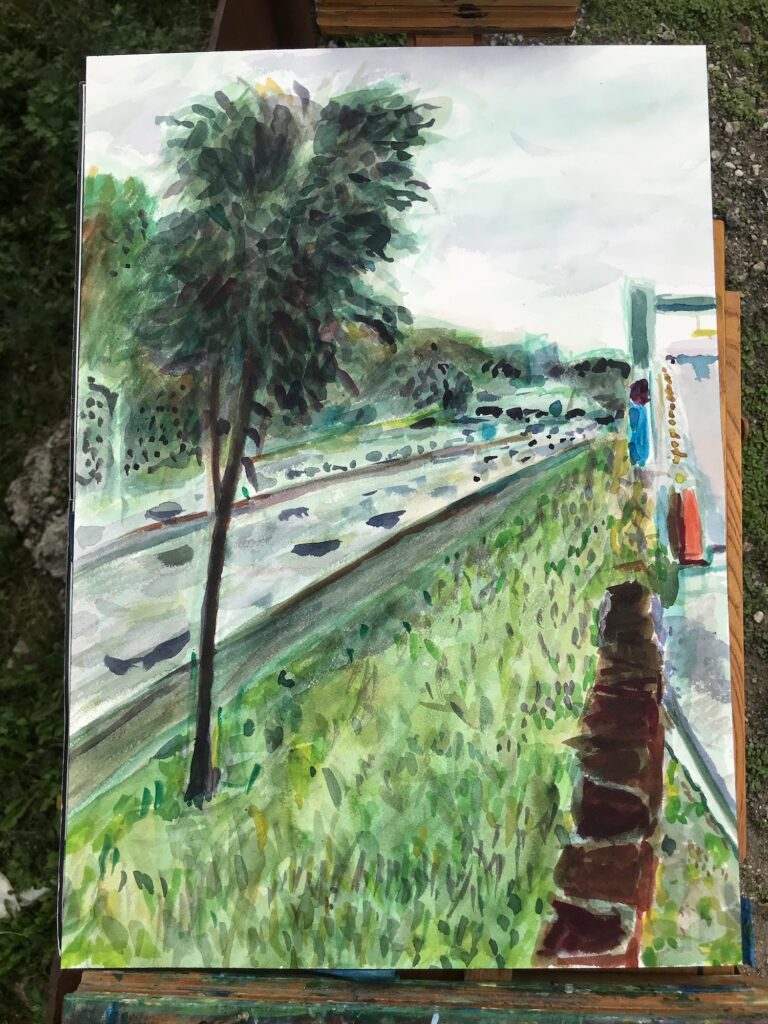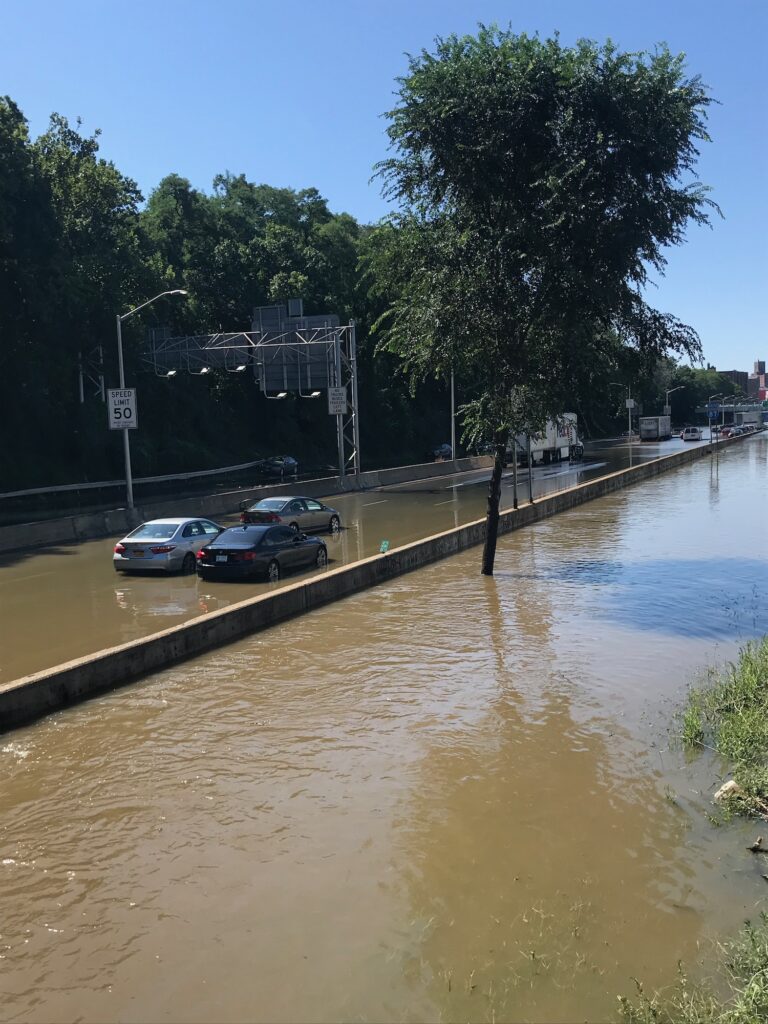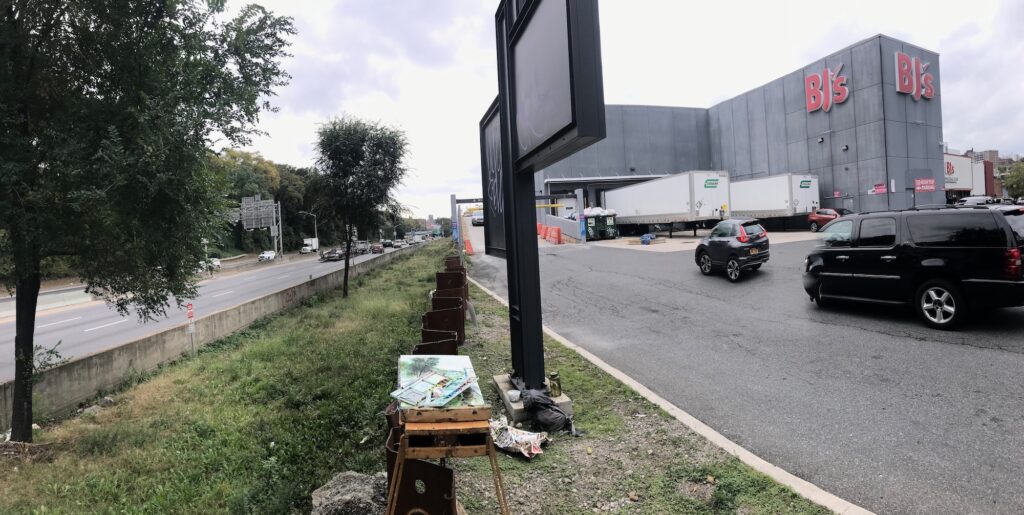Your cart is currently empty!
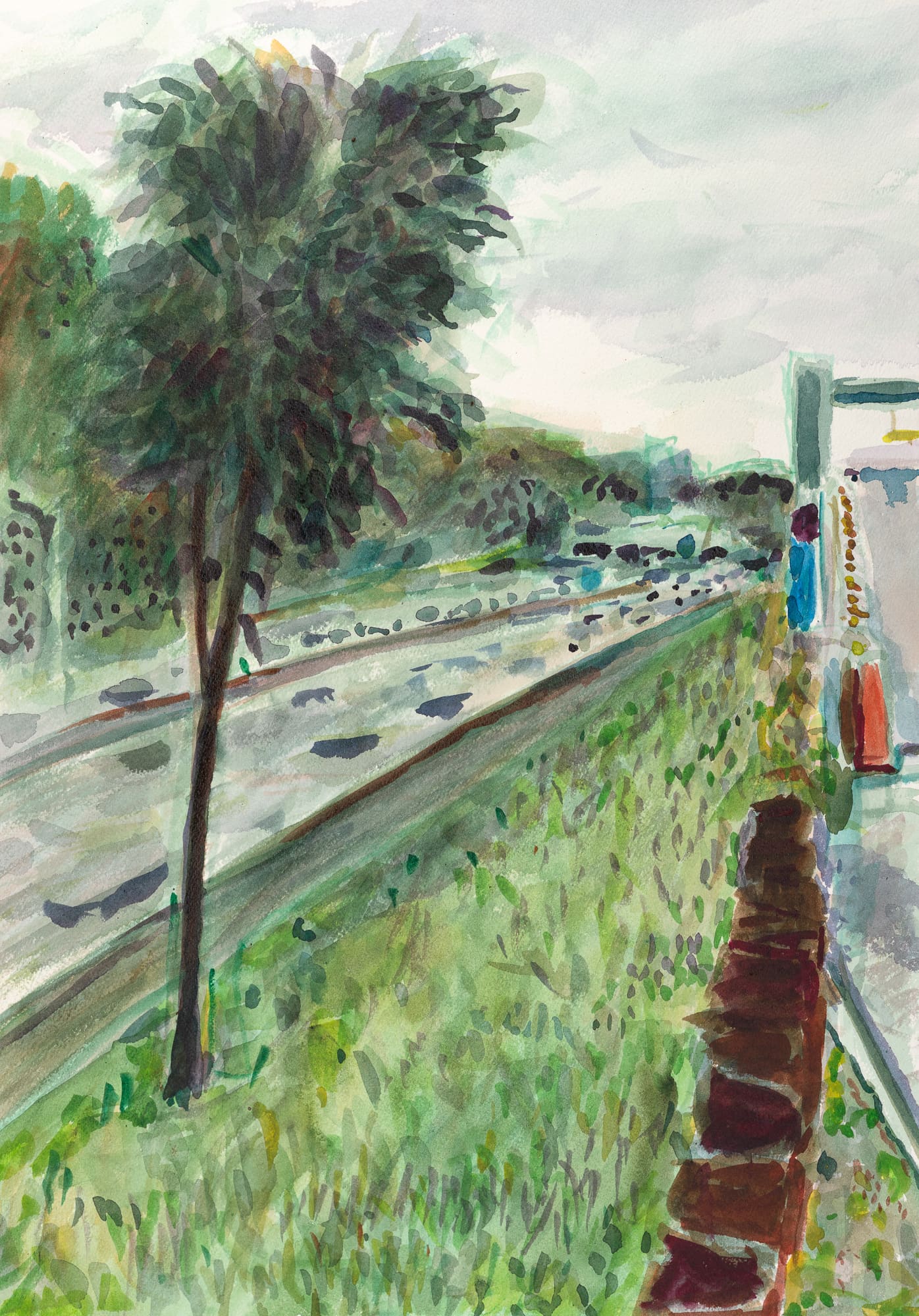
12. Riverdale Crossing Mall parking lot
I painted in the BJ’s warehouse parking lot, the former site of the Stella D’oro cookie factory.
This was another spot I knew of with no fence blocking the view. It’s under a sign for the larger complex, RIVERDALE CROSSING. These type of name choices are funny, solely meant to capitalize on the nearby affluent Riverdale name, yet mostly a congested car centric, pavement covered national chain mall. What exactly are we crossing here?
I was standing in the former rail bed, as it appears the mall built out into the right of way.
This is the loudest location I’ve painted at yet. There is a stone wall across the highway that I’m sure amplifies the highway. There were many speeding bikers and a few popping mufflers raced by.
My first choice to place the easel happened to disturb a large orb weaver spider. I was startled and moved to a different spot.
I set the composition with what looked like a green ash in the foreground and I was able to lean out over the steel reinforced bank to look far down the corridor.
Viewing into the distance is part of what needs to happen. I kept thinking about the 2080 maps from NYC government that indicate the floodplain is back both along this rail path and the historical Tibbetts brook path.
How to get a sense of water that is coming?
New York’s coasts have already risen 1 foot since 1900. It is almost common knowledge that the rains are getting heavier. New York City — formerly a humid continental climate — is now within the humid subtropical climate zone.
All the while impervious surfaces increase.
A middle-aged man watched me for a bit, apologetic “but just wanted to see what you were doing”
A younger man approached with a “That’s cool, bro.” We talked about the Deegan flooding and Tibbetts and how crazy that rain was. He had to turn off the breakers in his basement as he saw the water rising, later having to do extensive repairs on the sheet rock. I told him our car had to go to the shop. I wished him good luck with the rain coming the next day. I think I was more worried about it than him but the underlying concept of the “next one” rang true.
A young couple pulled up in their car and rolled down the window,
“Aye, you sell those?”
“Sure!”
I gave them both a card. She later followed me on instagram. They were happy to tell me that they are looking to decorate their place. I kind of love that they didn’t even take a look at the watercolor paper. I hope they like my work!
This site holds the ghosts of a labor union struggle with the old cookie factory. And before that, between indigenous people and colonizers. But it is hard to see in the present day.
I think about how land can erase struggle, and what other struggles will unfold here.
I am painting at this moment where a community is deciding how to live with water again.
How water will change them and how may they change water?
As the cars raced loudly by, I wondered, can it all be blamed on carbon?Co2, accumulating in the air, warming the planet, then the oceans, adding more water to the jet stream system bringing heavier rains?
Wetlands are excellent at carbon capture as well as slowing down water – How much carbon was emitted when this land was drained? It’s clear we need to invite the wetlands back.
This rail corridor is so straight, but the historical Tibbetts Brook had a lovely meander. Will this be a problem? What if Tibbetts is unburied and we still have flooding catastrophes?
I finished this dispatch the next day during a rainstorm that already shut down a small section of the BQE. I hear a story from the suburbs. Neighbor pumps the basement and floods next-door neighbor’s yard.
What are flood ethics when we are all technically downstream?
I unclogged a few storm drains during a walk. NYC government is actively encouraging citizens to do so, which feels oddly feeble and depressing
Flooding concerns have unfolded in real time for me simply through this process of sitting in place and painting it.
It’s almost overwhelming in a way, there is a real presence of water, and a sense of it’s increase.
It makes me think of “Shorakapok” – the Lenape word for the Spuyten Duyvil creek, meaning “the sitting down place.” The Dutch called these same temperamental waters the “spitting devil.” One response was to try to tame and mold the land. The other response was to sit down and observe.
I would love to hear a Lenape perspective on water in this area. It’s a shame I don’t know how to find one.
